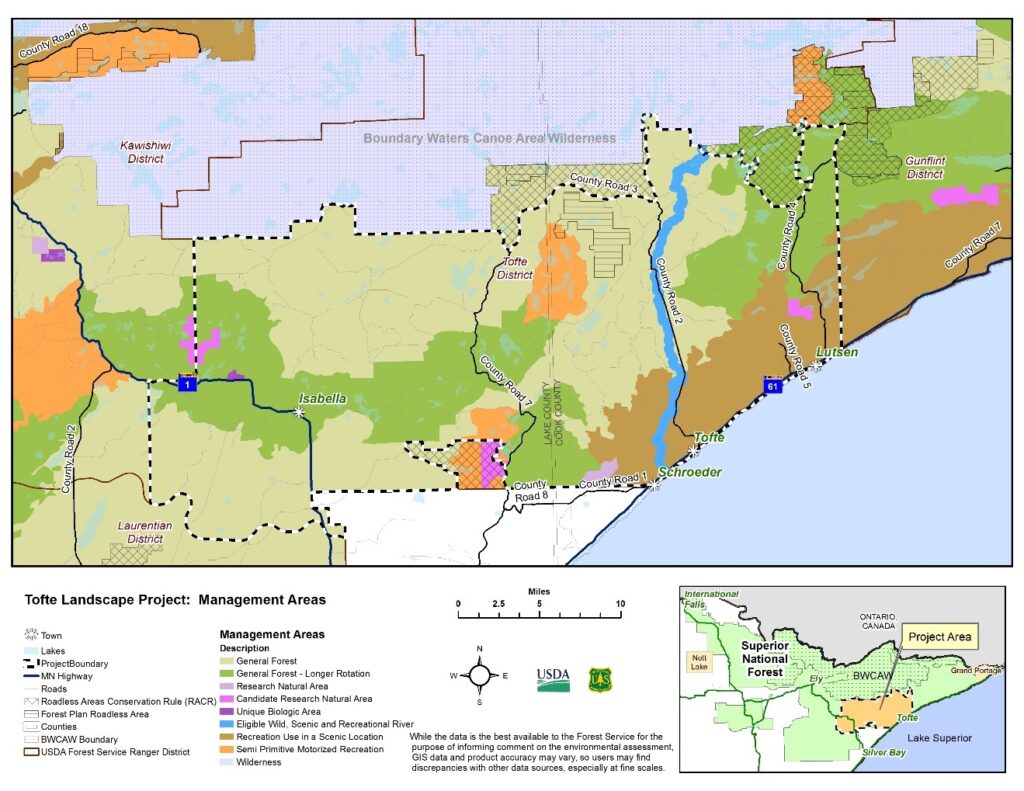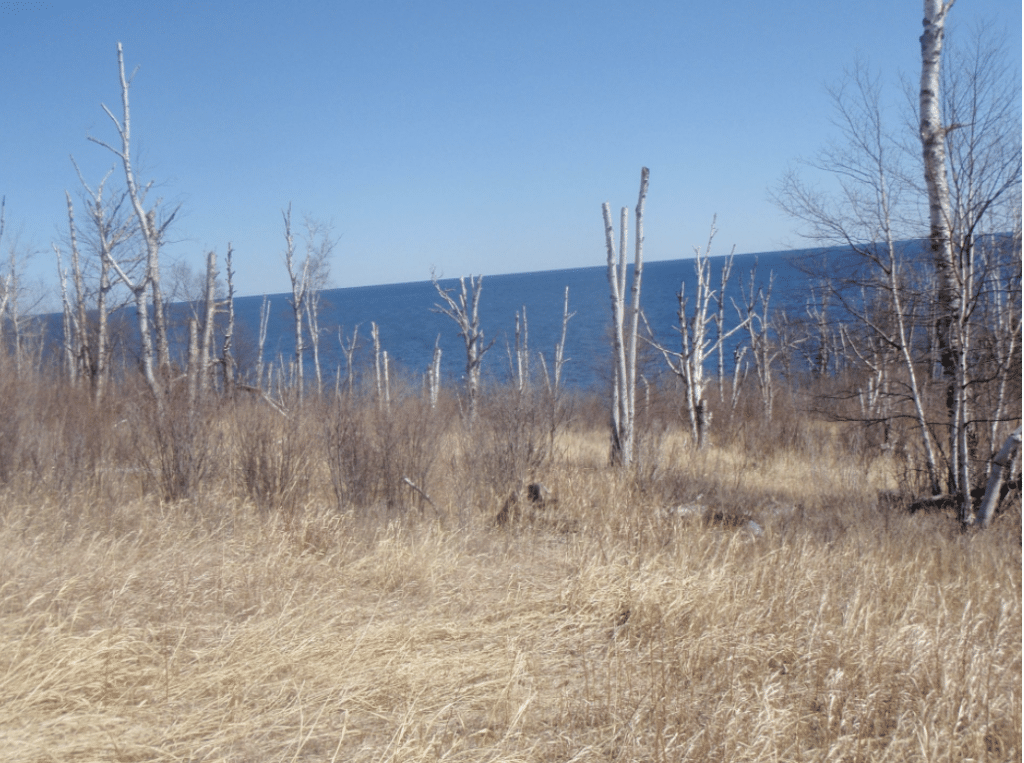
The Superior National Forest proposes a new forest management plan on the Tofte Ranger District. The Tofte Landscape Project would implement a flexible framework for management activities like logging, prescribed burning, tree planting, and other activities over a span of 15 years.
No logging, planting or burning would take place inside the Boundary Waters Canoe Area Wilderness, where most activities are prohibited, but would affect 333,000 acres of federal land within an overall area of about 450,000 acres. The target area abuts the southern edge of the Boundary Waters, with measures to minimize impacts on the wilderness.
The project seeks to meet a variety of management goals for the various forest types in the Superior’s overall plan, last updated in 2004. Those objectives include increasing young forest and jackpine, birch, and white pine forest, and decreasing aspen and balsam fir forests.
“This project would create a more diverse ecosystem, both in age and structure, as well as improve the health and resiliency of the forest in the project area,” wrote district ranger Ellen Bogardus-Szymaniak. “The project would create young forest, increase within stand diversity, improve tree density, create multi-aged stands, reduce hazardous fuels, provide forest products and create a diversity of wildlife habitat.” Moose and Canada lynx could both benefit from increased habitat, the agency says.

Logging and more
All told, in the 15-year timeframe of the project, 25,000 acres would be cut to provide wood for local loggers and create young forest types. Tens of thousands of additional acres would be burned to either reset forest succession, or prepare sites for other activities.
The actions are needed because of many different issues facing the health of the forests, which create closely connected ecosystems.
“Driving along the north shore of Lake Superior, it is hard not to notice the aged birch and aspen trees with broken tops that line the roadway,” the report says. “While in Isabella, spruce budworm has infested most of the fir and spruce trees, leaving large thickets of dead, defoliated trees. Balsam fir line many of our roadways and trails – a species that is highly flammable and our largest concern in terms of wildfire risk.”

Keeping up with changes
The Forest Service is developing and using a new management planning framework with the project. The agency says conditions are moving too fast on the ground now for traditional, lengthier planning.
“Climate change is altering forest conditions, particularly through warmer winter temperatures and increased precipitation,” the report says. “In addition to these disturbance factors, forest succession continually changes forest conditions.”
The new method involves creating several “filters” for different forest types, to consider when deciding where to act. It won’t have the level of detail to the specific stand like many previous projects, when the Forest Service says many actions are never implemented because conditions change. Based on comments during an earlier phase of planning, the Forest Service says it has added filters to the framework to minimize impacts on the Boundary Waters, accommodate legally-protected Native American rights, and other mitigation.
“Feedback included requests to allow for selected temporary roads to be accessed for hunting and gathering, that tribal government be consulted during the implementation cycle, and for tribal interests to be identified as a landscape filter,” the agency says.
Boundary Waters buffer
For the Boundary Waters Canoe Area, mechanized activity will be significantly limited within 0.6 miles from the wilderness boundaries. Winter harvest will be encouraged so activity takes place during a time of year when wilderness use is low.
The buffer of 3,046 feet of restrictions from the edge of the wilderness is based on previous findings. At another forest management project on the Superior National Forest, it was found that a large piece of logging equipment called a “feller-buncher” produces 34 decibels at 3,046 feet. Other studies have shown that 34 decibels is the general ambient sound level inside the Boundary Waters.
The Superior National Forest will host a virtual open house for the project on June 30 from 5-7 p.m. Comments should be submitted by July 15.
Comments can be sent by mail to: Ellen Bogardus-Szymaniak, District Ranger, Tofte Ranger District, 7355 West Highway 61, PO BOX 2159, Tofte, MN 55615. Email comments to commentseasternsuperiortofte@usda.gov with the subject line: “Tofte Landscape Project Draft EA.” Electronic comments may also be submitted with the StoryMap “Leave a Comment” interface. All comments should include name, address, and the “Tofte Landscape Project” title. For further information, contact Peter Taylor at peter.r.taylor@usda.gov.

